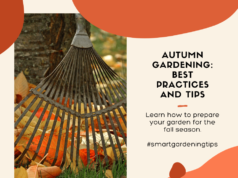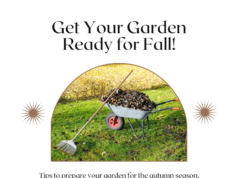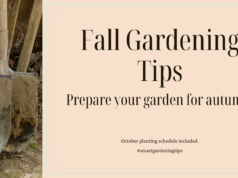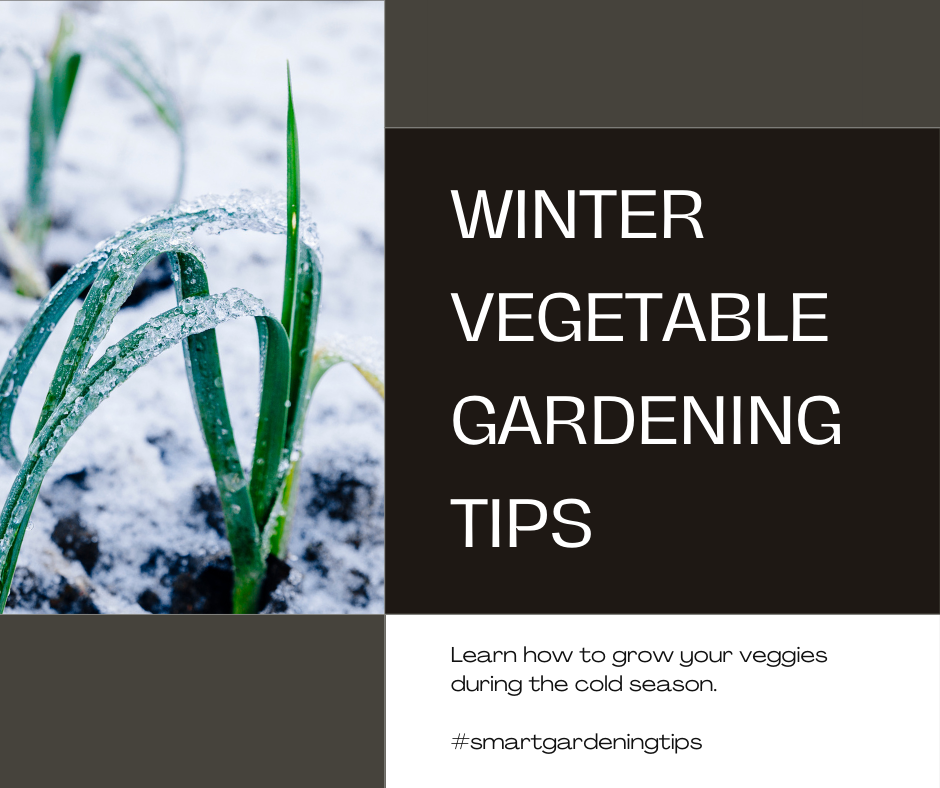
Welcome to our comprehensive guide to winter vegetable gardening! As the temperatures drop and the days grow shorter, it’s the perfect time to explore the joys of growing your own vegetables during the colder months. Whether you’re an experienced gardener or a novice with a green thumb, this article will provide you with valuable tips and strategies for a successful winter vegetable garden.
Key Takeaways:
- Planning and preparation are crucial for a successful winter vegetable garden.
- Choose the right vegetables that thrive in colder temperatures.
- Timing is essential when determining planting times for winter crops.
- Creating a suitable garden layout promotes healthy plant growth.
- Proper care and maintenance ensure your winter vegetables thrive throughout the season.
The Importance of Winter Vegetable Gardening
Winter vegetable gardening is more than just a hobby; it is an activity that holds great value for both the environment and your overall well-being. Understanding the importance of winter vegetable gardening can inspire you to embrace this rewarding practice and reap its numerous benefits.
Growing vegetables during the winter months allows you to make a positive impact on the environment. By cultivating your own produce, you reduce your reliance on commercially grown vegetables that often require extensive transportation and packaging. This helps reduce your carbon footprint and contributes to a more sustainable food system.
In addition to its environmental benefits, winter vegetable gardening also has a significant impact on your personal well-being. Spending time in nature, tending to your plants, and harvesting your own vegetables can provide a sense of peace, fulfillment, and connection with the earth. It offers a welcome break from the fast-paced modern world and allows you to slow down, de-stress, and experience the therapeutic benefits of gardening.
“Winter vegetable gardening allows you to make a positive impact on the environment, while also providing an opportunity for personal well-being and connection with nature.”
Furthermore, winter vegetable gardening offers you the opportunity to enjoy fresh, nutrient-rich produce throughout the colder months. By growing your own vegetables, you have control over the cultivation process and can ensure that you are consuming the freshest, most flavorful produce. This enhances your overall diet and promotes a healthier lifestyle.
To fully appreciate the importance of winter vegetable gardening, it is essential to recognize how it contributes to self-sufficiency. By cultivating your own food, you become less dependent on external sources and gain a sense of empowerment and resilience. It also provides you with the satisfaction of knowing the origin of your food, the care and effort involved in its cultivation, and the rewarding experience of enjoying the fruits of your labor.
Benefits of Growing Winter Vegetables
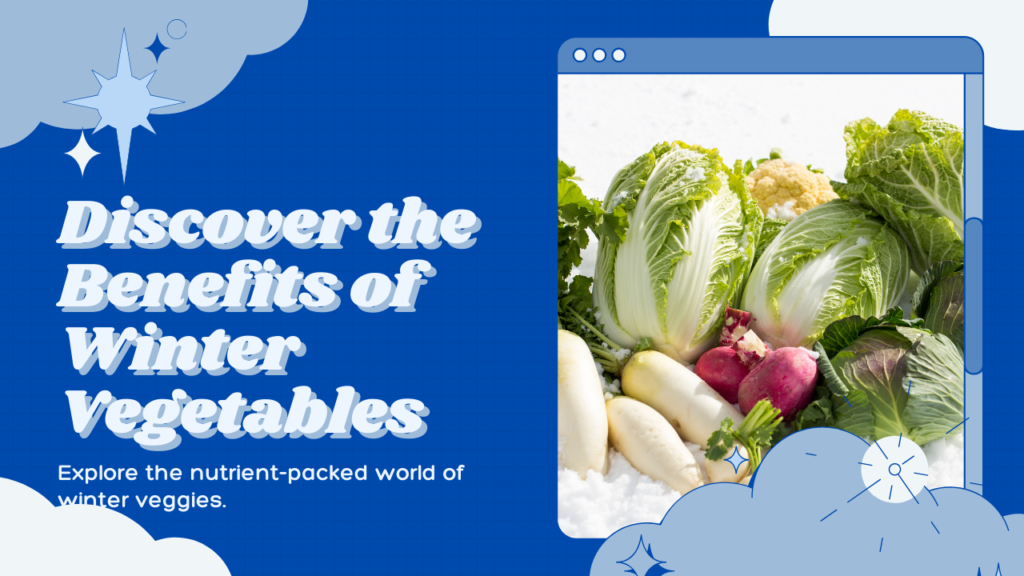
When it comes to gardening, the benefits of growing winter vegetables are abundant. Not only does it provide you with access to fresh, nutritious produce throughout the colder months, but it also offers a range of other advantages that make it a rewarding and worthwhile activity for any gardening enthusiast.
1. Fresh and Nutritious Produce
Winter vegetables are packed with essential vitamins, minerals, and antioxidants that are vital for maintaining a healthy diet. By growing your own winter vegetables, you can take full control of the growing process, ensuring that your produce is free from harmful chemicals and pesticides.
2. Cost Savings
One of the standout benefits of growing winter vegetables is the significant cost savings it can provide. By cultivating your own garden, you can reduce your grocery bill and save money on expensive supermarket produce. The initial investment in seeds and gardening supplies often pays for itself many times over.
3. Environmental Sustainability
Winter vegetable gardening promotes environmental sustainability. By growing your own food, you reduce your carbon footprint by minimizing transportation and packaging waste. Additionally, home gardening contributes to the conservation of biodiversity and fosters a healthier ecosystem.
“Growing winter vegetables not only benefits your health and wallet but also the planet. It’s a win-win situation for you and the environment.” – Jane Smith, Master Gardener
4. Self-Sufficiency and Satisfaction
There’s a sense of pride and satisfaction that comes from nurturing your plants from seed to harvest. Growing your own winter vegetables allows you to become more self-sufficient and provides a rewarding sense of accomplishment. Plus, nothing compares to the taste of fresh, homegrown produce straight from your garden.
Overall, the benefits of growing winter vegetables extend far beyond the mere act of gardening. It offers a multitude of advantages, from enjoying fresh and nutritious produce to saving money and contributing to a more sustainable lifestyle. So why not embrace the joys of winter vegetable gardening and reap its abundant rewards?
Planning Your Winter Vegetable Garden
When it comes to winter vegetable gardening, effective planning is the key to success. By taking the time to carefully plan your garden, you can ensure optimal growth and maximize your harvest. Here are some essential steps to consider when planning your winter vegetable garden.
Selecting the Right Vegetables
First and foremost, you need to choose the right vegetables that can thrive in cold weather conditions. Some popular winter vegetables include kale, spinach, carrots, beets, and Brussels sprouts. These cold-hardy varieties can withstand frost and chilly temperatures, making them ideal for your winter garden.
Determining the Best Planting Times
The next step is to determine the best planting times for your chosen winter vegetables. Planting too early can expose your plants to late-season frosts, while planting too late may not give them sufficient time to mature before the winter sets in. Consider the recommended planting dates for each vegetable and plan accordingly.
Creating a Suitable Garden Layout
A well-planned garden layout is essential for optimal growth and productivity. Consider the space available and plan your garden layout accordingly. Group vegetables with similar water and sunlight requirements together and ensure proper spacing between plants to promote healthy growth.
Proper planning is essential for a successful winter vegetable garden. Select the right vegetables, determine the best planting times, and create a suitable garden layout for optimal growth.
By following these planning tips, you’ll be on your way to a thriving winter vegetable garden. Remember to consider the specific needs of each vegetable and provide the necessary care throughout the season. Happy gardening!
| Vegetable | Planting Time |
|---|---|
| Kale | Late summer to early fall |
| Spinach | Early fall to late winter |
| Carrots | Late summer to early fall |
| Beets | Late summer to early fall |
| Brussels Sprouts | Mid-summer to early fall |
Selecting the Right Vegetables
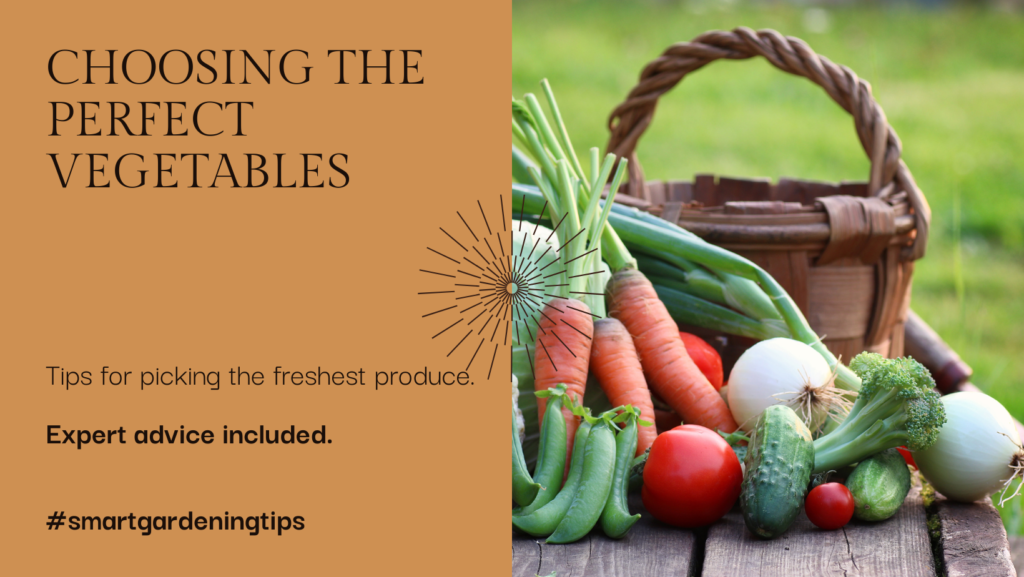
When it comes to winter gardening, selecting the right vegetables is crucial for a successful harvest. Not all vegetables can withstand the cold temperatures and harsh conditions of the winter months. By choosing varieties that are suited for colder climates, you can ensure the health and productivity of your winter vegetable garden.
So, which vegetables thrive in colder temperatures? Let’s explore some excellent options that will flourish in your winter garden:
- Kale: This leafy green powerhouse is a winter gardening superstar. With its ability to tolerate frost and even improve in flavor after exposure to cold temperatures, kale is a must-have for any winter garden.
- Spinach: Another nutrient-packed leafy green, spinach grows exceptionally well in cooler temperatures. Its versatility in salads, smoothies, and cooked dishes makes it a favorite among gardeners and chefs alike.
- Carrots: These root vegetables are known for their cold-hardiness and ability to sweeten as the temperatures drop. Plant them in well-drained soil and enjoy a bountiful harvest of vibrant orange carrots throughout the winter.
- Beets: With their earthy sweetness and stunning colors, beets are an excellent choice for winter gardening. They can tolerate frost and colder temperatures, providing you with a nutritious and flavorful addition to your winter meals.
- Brussels sprouts: Known for their unique flavor and distinctive appearance, Brussels sprouts are a cold-weather favorite. They thrive in cool temperatures and are a great addition to any winter garden.
These are just a few examples of vegetables that are well-suited for winter gardening. However, there are many other options available, including cabbage, broccoli, cauliflower, and leeks, among others. Consider your climate and local growing conditions when selecting the right vegetables for your winter garden.
To help you visualize the different vegetables and their characteristics, take a look at the table below:
| Vegetable | Cold hardiness | Flavor | Growth time |
|---|---|---|---|
| Kale | High | Bitter or mild, depending on variety | 60-80 days |
| Spinach | Medium | Mild, slightly earthy | 37-45 days |
| Carrots | High | Sweet, crunchy | 60-80 days |
| Beets | Medium | Earthy, sweet | 55-65 days |
| Brussels sprouts | High | Nutty, slightly sweet | 80-100 days |
As you can see, each vegetable has its own unique characteristics and growth requirements. Consider factors such as the cold hardiness, flavor profile, and growth time when making your selection.
Determining Planting Times
Timing plays a crucial role in the success of your winter vegetable garden. Determining the ideal planting times for different crops is essential to ensure successful growth and maximize your harvest. Here are some tips to help you determine the best times to plant your winter vegetables:
1. Know the Frost Dates
Understanding the average first and last frost dates in your region is key to determining planting times. Check with your local agricultural extension office or use online resources to find out when the frost typically occurs in your area.
2. Consider Crop Maturity
Each winter vegetable has a specific maturity period, which is the time it takes for the plant to reach harvestable size. You need to ensure that your vegetables have enough time to grow and mature before the first frost of the season. Research the average days to maturity for the crops you plan to grow and count backward from the expected frost date to determine the best planting times.
3. Use the Planting Calendar
A planting calendar is a useful tool that provides specific planting dates based on your location. It takes into account the average frost dates and the recommended planting windows for different vegetables. Consult a planting calendar to get precise information on when to plant each crop in your area.
4. Consider Temperature and Daylight
Temperature and daylight hours also influence the growth and development of winter vegetables. Some crops, like lettuce and spinach, can tolerate colder temperatures and shorter daylight hours, while others, like tomatoes and peppers, prefer warmer conditions. Take these factors into account when determining the planting times for your crops.
5. Experiment and Observe
Every garden is unique, and the conditions in your specific microclimate may deviate slightly from the general guidelines. It’s always a good idea to experiment and observe the performance of your crops. Keep a gardening journal to note the planting dates, growth progress, and overall success of your winter vegetables. This information will help you refine your planting times in future seasons.
| Vegetable | Days to Maturity | Planting Time |
|---|---|---|
| Kale | 60-80 days | Plant 8-10 weeks before the first expected frost date |
| Carrots | 65-75 days | Plant 10-12 weeks before the first expected frost date |
| Broccoli | 60-80 days | Plant 8-10 weeks before the first expected frost date |
| Spinach | 40-50 days | Plant 4-6 weeks before the first expected frost date |
Remember, determining the planting times for your winter vegetables requires careful consideration of factors such as frost dates, crop maturity, planting calendars, temperature, and daylight hours. By following these guidelines and monitoring the performance of your crops, you’ll be on your way to a successful winter vegetable garden.
Creating a Suitable Garden Layout

When it comes to winter vegetable gardening, creating a suitable garden layout is essential for optimizing space and ensuring healthy plant growth. By carefully designing your garden, you can maximize efficiency, create an aesthetically pleasing space, and ultimately enjoy a thriving winter harvest.
Here are some tips and considerations to keep in mind as you plan your garden layout:
1. Assess Your Space
Start by assessing the available space in your garden. Consider factors such as the size, shape, and orientation of your garden plot. This will help you determine how to best utilize the space for your winter vegetables.
2. Consider Sunlight Exposure
Sunlight is crucial for the growth and development of plants. Take note of the areas in your garden that receive the most sunlight during the winter months. Position your vegetable beds and containers accordingly to ensure your plants receive the optimal amount of sunlight.
3. Plan for Crop Rotation
Crop rotation is an important practice to maintain soil health and prevent pest and disease buildup. When designing your garden layout, consider the crop rotation schedule for your winter vegetables. Plan where each crop will be placed in subsequent years to maintain a healthy growing environment.
4. Group Plants with Similar Watering Needs
Efficient watering is key to a successful garden. To streamline your watering routine, group plants with similar watering needs together. This will make it easier to provide adequate moisture to each plant and avoid over or under-watering.
5. Maximize Planting Space
Make the most of your garden space by utilizing vertical gardening techniques such as trellises or stakes for vining crops. Additionally, interplanting compatible vegetables can help maximize the use of your garden beds or containers.
By implementing these tips and carefully considering the layout of your winter vegetable garden, you can create a functional and visually appealing space. This will not only optimize your gardening experience but also promote healthy plant growth and increase your chances of a bountiful winter harvest.
Preparing Your Garden for Winter Vegetables
Proper preparation of your garden is crucial to create an ideal environment for winter vegetables. By taking the necessary steps to prepare the soil, ensure proper drainage, and protect your plants from frost, you can help your winter garden thrive. Follow these essential tips to get your garden ready for the colder months.
1. Prepare and Amend the Soil
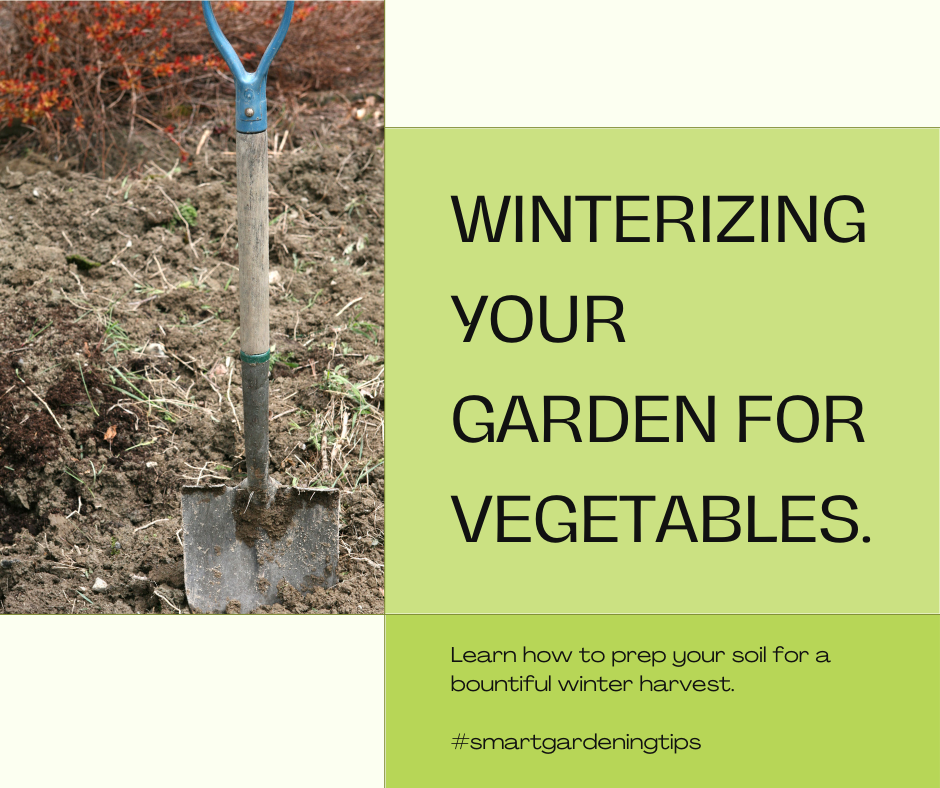
The quality of your soil plays a significant role in the success of your winter vegetable garden. Begin by removing any weeds or debris from the planting area. Next, add organic matter such as compost or well-rotted manure to enrich the soil and improve its texture. This will provide essential nutrients and create a fertile growing environment for your winter vegetables. Ensure the soil is well-draining to prevent waterlogging, which can lead to root rot.
2. Ensure Adequate Drainage
Proper drainage is essential to prevent waterlogged soil and root rot in your winter vegetable garden. If your garden tends to retain excess water, consider incorporating raised beds or mounds to improve drainage. Additionally, avoid over-watering your plants during the winter months, as they require less water compared to warmer seasons.
3. Protect Against Frost
Frost can be detrimental to winter vegetables, causing damage or even killing delicate plants. Take measures to protect your garden from frost by using covers such as frost blankets or cloths. These covers can be placed over plants during cold nights to create a barrier and help retain heat. Additionally, consider using mulch to insulate the soil and provide further protection against freezing temperatures.
4. Table: Winter Garden Preparation Checklist
| Task | Description |
|---|---|
| Clear debris | Remove weeds, fallen leaves, and any other debris from the garden area. |
| Amend soil | Add organic matter such as compost or well-rotted manure to enrich the soil. |
| Improve drainage | Consider raised beds or mounds for better drainage if needed. |
| Protect against frost | Use frost blankets or cloths to shield plants from freezing temperatures. |
By preparing your garden properly, you set a strong foundation for a thriving winter vegetable garden. Take the time to amend the soil, ensure adequate drainage, and protect your plants from frost. These steps will help create the optimal conditions for your winter veggies to flourish.
Planting and Caring for Winter Vegetables
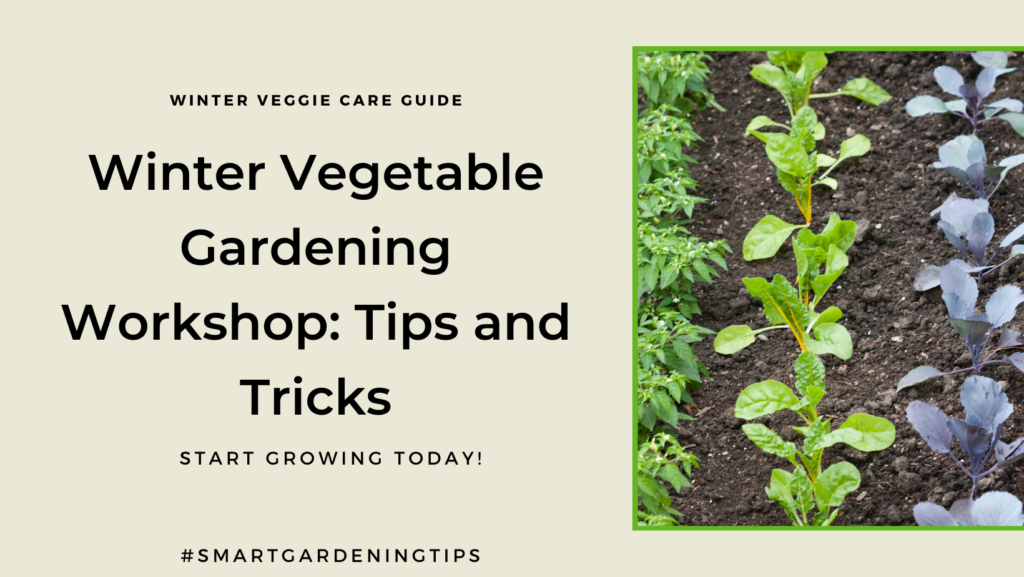
When it comes to planting and caring for winter vegetables, following the right techniques is crucial to ensure a successful harvest. With the right approach, you can maintain the health and vitality of your crops even during the cold winter months. Here are some essential tips for planting and caring for winter vegetables:
Proper Planting Techniques
When planting winter vegetables, it’s important to prepare the soil adequately. Start by clearing any debris and weeds from the planting area. Then, loosen the soil with a garden fork or tiller to improve drainage and aeration.
Next, follow the recommended planting depths and spacing for each vegetable variety. This information can typically be found on the seed packet or plant label. Planting at the correct depth and spacing ensures that the roots have ample room to grow and access necessary nutrients.
Watering and Fertilizing Schedules
Watering is critical for the health and growth of winter vegetables. While the watering requirements may vary depending on the specific vegetable, a general rule of thumb is to provide 1-2 inches of water per week. However, be mindful of overwatering, as excessive moisture can lead to rot and disease.
Fertilizing is another important aspect of caring for winter vegetables. Incorporate organic matter, such as compost or aged manure, into the soil before planting. This enriches the soil with essential nutrients. Additionally, consider using a balanced organic fertilizer during the growing season to provide ongoing nourishment to the plants.
Protecting Against Pests and Cold
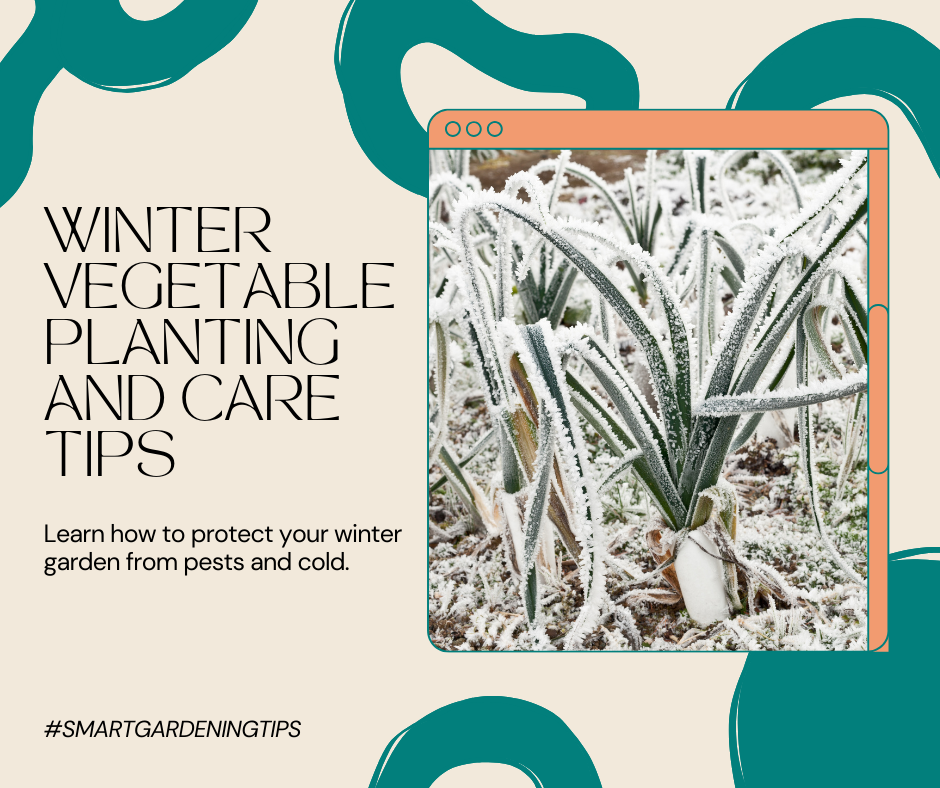
Winter vegetables are not immune to pests and cold temperatures. To safeguard your crops, implement preventative measures such as mulching and row covers. Mulching helps insulate the soil, conserves moisture, and reduces weed growth. Row covers provide an additional layer of protection against frost and unwanted pests.
Regularly inspect your plants for signs of pests or diseases, such as yellowing leaves or wilting. Act promptly by applying organic pest control methods or consulting with a local gardening expert to address any issues.
“Proper planting techniques, adequate watering, and protection against pests and cold are crucial for successful winter vegetable gardening.”
By following these essential techniques, you’ll be well-prepared to plant and care for your winter vegetables. Remember to adapt your gardening practices based on the specific needs of each vegetable variety and stay consistent with watering and fertilizing schedules. With proper care and attention, your winter garden will thrive and yield a bountiful harvest.
Harvesting and Storing Winter Vegetables
Once your winter vegetables have reached maturity, it’s time to harvest them to enjoy the freshest flavors of the season. Proper harvesting techniques play a crucial role in preserving the taste and nutritional value of your crops. Here are some expert tips to help you harvest your winter vegetables at the right time:
- Check for maturity: Carefully examine your vegetables to ensure they are fully mature. Different crops have different indicators of maturity. For example, leafy greens should have full-sized leaves, while root vegetables should be of the appropriate size and shape.
- Harvest in the morning: Harvest your winter vegetables early in the morning when temperatures are cooler. This helps preserve their freshness and minimizes moisture loss.
- Use sharp tools: Use sharp pruners or knives when harvesting leafy vegetables to minimize damage to the plants. For root vegetables, gently loosen the soil around the base before pulling them out.
- Handle with care: Be gentle when handling your harvested winter vegetables to avoid bruising or damaging them. Place them in a basket or container lined with a soft cloth to prevent excessive moisture loss.
Once you’ve harvested your winter vegetables, it’s essential to store them properly to prolong their shelf life. Follow these storage techniques to maintain freshness:
- Remove foliage: For leafy vegetables like kale or spinach, remove any excess foliage before storing. This helps prevent moisture buildup and keeps the leaves crisp.
- Store at optimal temperatures: Different vegetables have different temperature requirements for storage. Some prefer cool temperatures around 32°F (0°C), while others thrive in slightly warmer conditions around 50°F (10°C). Refer to a vegetable-specific storage guide for precise temperature recommendations.
- Control humidity levels: To prevent excess moisture or drying, maintain proper humidity levels in your storage area. You can use a cool-mist humidifier or place a tray of water nearby to regulate humidity.
- Use breathable containers: Avoid storing your winter vegetables in plastic bags or airtight containers as they can trap moisture and promote spoilage. Instead, opt for breathable containers like paper bags or open-weave baskets.
By harvesting your winter vegetables at the right time and storing them properly, you can enjoy their flavors and nutritional benefits throughout the season. Start incorporating these expert tips into your winter vegetable gardening routine to make the most of your harvest.
Popular Winter Vegetables to Grow
Ready to cultivate a thriving winter garden? Explore a variety of popular winter vegetables that will flourish in the colder months. By choosing the right crops, you can enjoy an abundant and nutritious harvest even when temperatures drop.
1. Leafy Greens
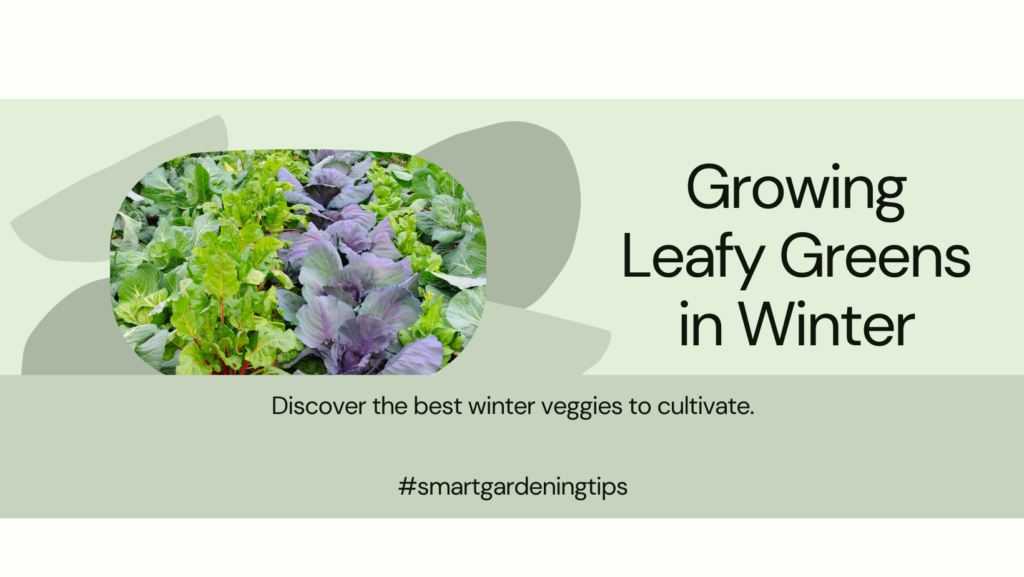
Leafy greens are excellent choices for winter gardening, as they thrive in cooler temperatures. Greens like kale and spinach are packed with vitamins, minerals, and antioxidants, making them a healthy addition to your meals during the winter season. These resilient vegetables can withstand frost and will continue to produce fresh leaves throughout the colder months.
2. Root Vegetables
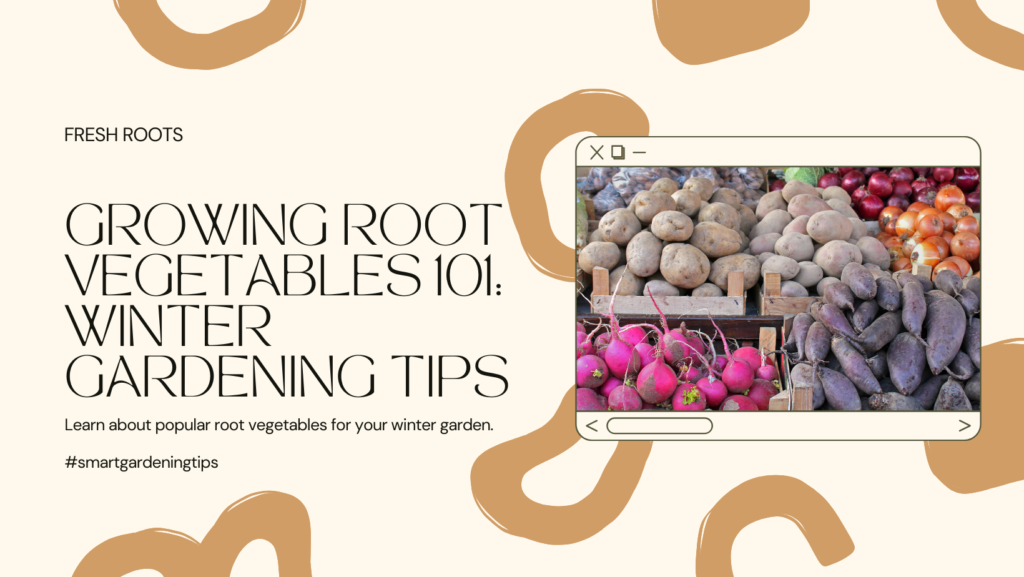
Root vegetables, such as carrots, beets, and radishes, are well-suited for winter growth. These hardy crops can tolerate cold conditions and will provide you with delicious and versatile ingredients for soups, stews, and roasted dishes. With their vibrant colors and earthy flavors, root vegetables add both nutrition and visual appeal to your winter garden.
3. Cabbage Family
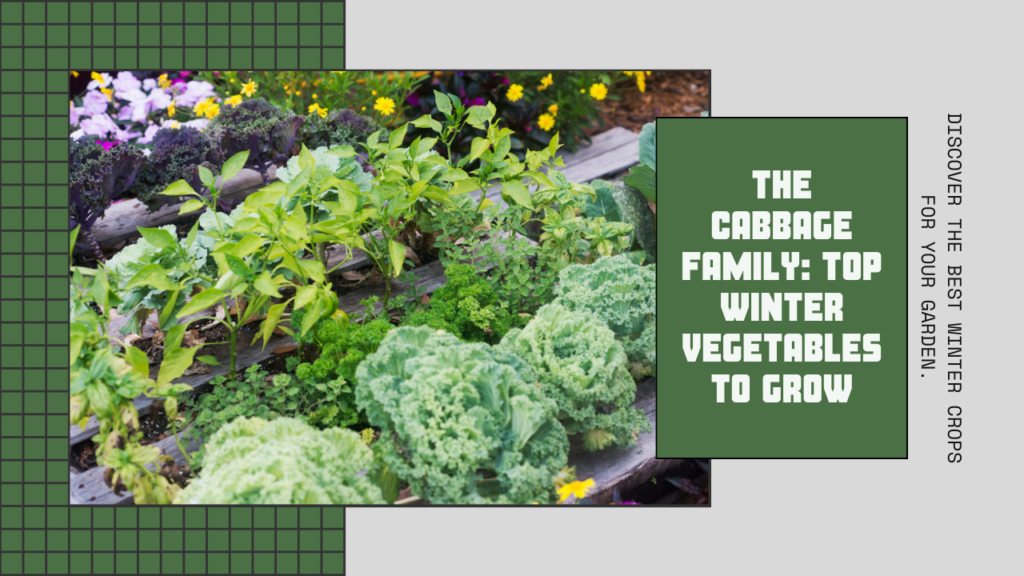
The cabbage family, which includes vegetables like cabbage, kohlrabi, and brussels sprouts, is known for its cold tolerance. These robust plants can survive freezing temperatures and even improve in flavor after exposure to frost. Whether you enjoy them steamed, sautéed, or incorporated into your favorite winter dishes, cabbage family vegetables are a must-have for any winter garden.
4. Alliums
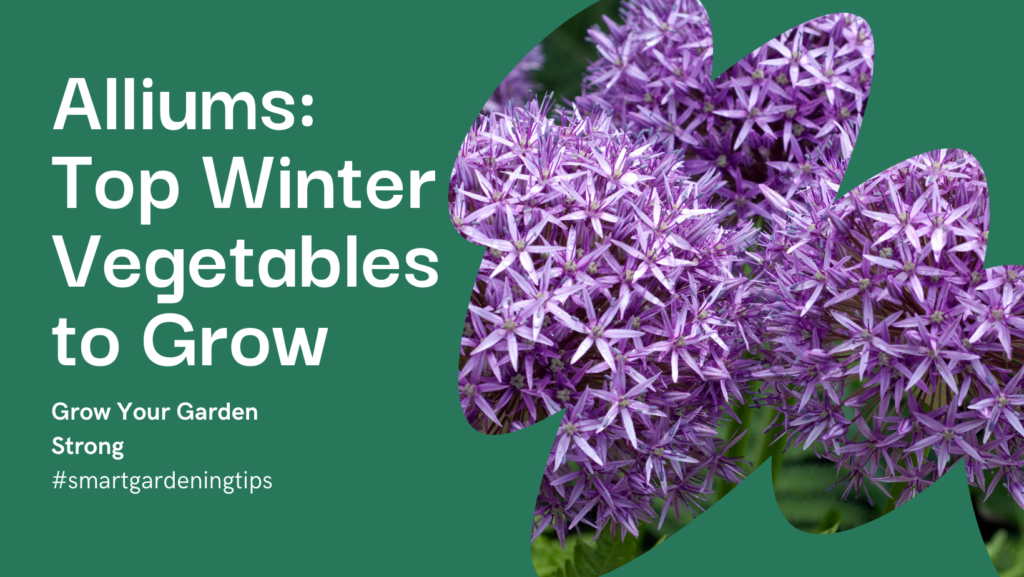
Alliums, including garlic and onions, are ideal for winter cultivation. These aromatic vegetables thrive in cool weather and can be planted in late fall for a bountiful harvest the following year. With their distinct flavors and numerous health benefits, alliums are essential ingredients in a wide range of savory winter recipes.
5. Winter Squash

Winter squash varieties like butternut and acorn squash are excellent choices for winter gardening. These hearty vegetables can be harvested in late summer or early fall and store well throughout the winter months. Winter squash can be roasted, pureed, or used in comforting dishes like soups and casseroles, providing warmth and nourishment during the colder season.
| Winter Vegetables | Recommended Varieties | Planting Time |
|---|---|---|
| Kale | Dwarf Blue Curled | Late summer to early fall |
| Spinach | Winter Bloomsdale | Late summer to early fall |
| Carrots | Scarlet Nantes | Late summer to early fall |
| Beets | Detroit Dark Red | Late summer to early fall |
| Radishes | French Breakfast | Late summer to early fall |
Embrace the joy of winter gardening by growing these popular vegetables. Enhance your meals with fresh, homegrown produce and experience the satisfaction of nurturing your garden during the colder months.
Tips for Extending the Winter Growing Season
To ensure a fruitful winter vegetable garden, it’s important to extend the growing season as much as possible. By implementing a few key strategies, you can protect your crops from the harsh elements and continue harvesting fresh produce well into the colder months.
1. Utilize Row Covers
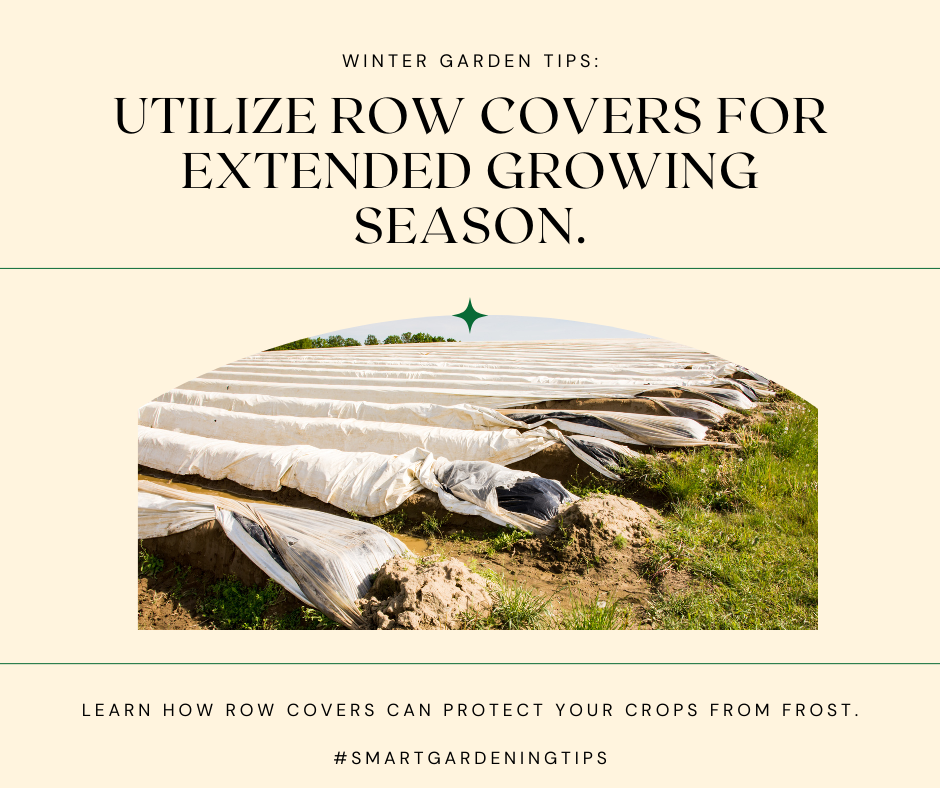
Row covers are an excellent tool for shielding your plants from frost, wind, and cold temperatures. These lightweight covers act as a protective barrier, allowing sunlight and moisture to reach your crops while keeping them insulated from the harsh conditions. Simply drape the row covers over your plants and secure them with stakes or weights to create a microclimate that encourages growth and extends the growing season.
2. Embrace Cold Frames
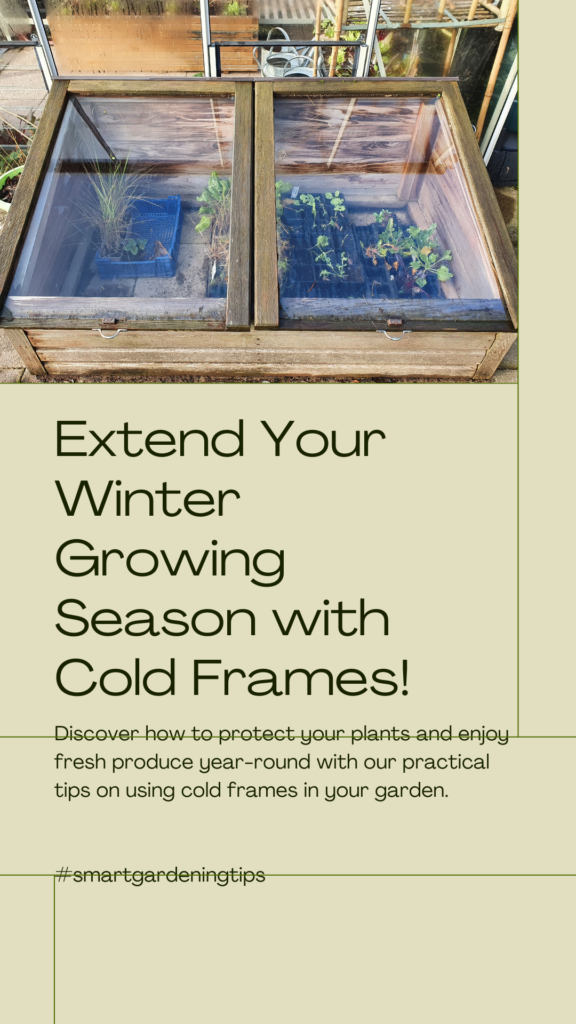
Incorporating cold frames into your winter gardening routine can significantly prolong your growing season. A cold frame is a simple structure with a transparent lid that captures heat from the sun and creates a mini greenhouse effect. Placing your cold frame in a sunny spot and adding insulating materials, such as hay or straw, can provide your plants with extra warmth and protection. Cold frames are ideal for growing cold-hardy vegetables like lettuce, spinach, and kale, allowing you to enjoy fresh greens even when temperatures drop.
3. Implement Crop Rotation

Crop rotation involves changing the location of your crops each year to benefit soil health and prevent the buildup of pests and diseases.
Implementing crop rotation in your winter vegetable garden is a smart practice that can contribute to the extension of the growing season. By rotating crops, you disrupt the life cycles of pests and diseases while improving soil fertility and structure. This allows you to maintain the health of your plants and maximize their productivity throughout the winter months. Consider grouping crops with similar nutrient requirements together and rotating them to different areas of your garden each year.
4. Provide Adequate Watering
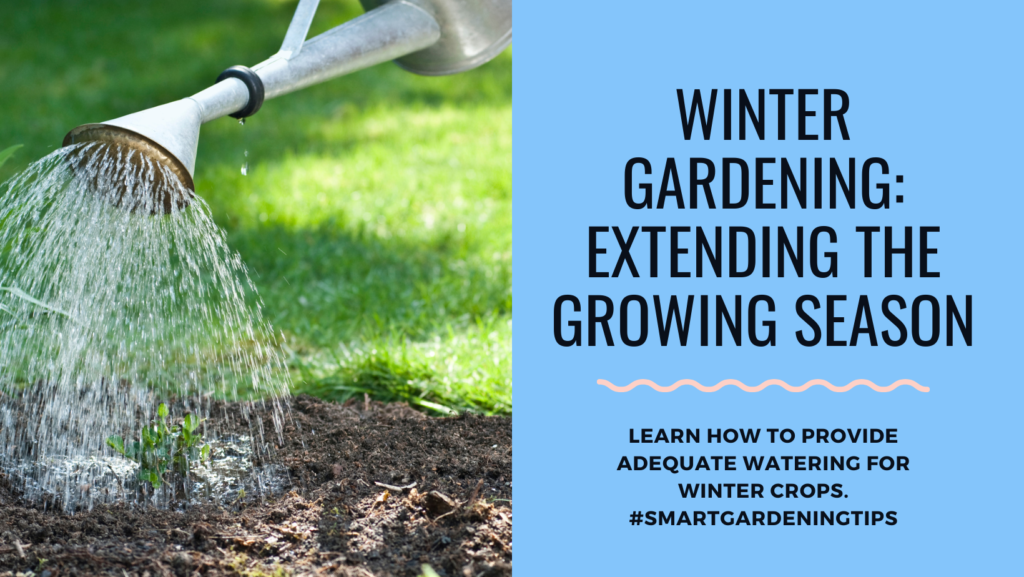
While it may be tempting to reduce watering during the winter, it’s essential to ensure that your plants receive adequate moisture. Even though plants have reduced water needs in colder weather, they still require hydration to maintain growth. Monitor the moisture levels of the soil and water your winter crops when necessary, ensuring the soil remains consistently moist but not waterlogged. Mulching around your plants can help retain moisture and regulate soil temperature, further supporting extended growth.
5. Take Advantage of Season Extension Tools
Expand your options for winter gardening by utilizing various season extension tools. Consider investing in portable greenhouses, high tunnels, or even heat lamps to provide additional warmth and protection to your crops. These tools can greatly extend the growing season by creating a controlled environment that mimics spring-like conditions. Research and choose the tools that align with your specific gardening goals and the size of your garden.
By implementing these tips for extending the winter growing season, you can enjoy a thriving garden throughout the colder months. Whether you’re using row covers, cold frames, or rotating your crops, these strategies will help you maximize your harvest and produce an abundance of fresh winter vegetables.
FAQ
Q. Why is winter vegetable gardening important?
A. Winter vegetable gardening is important because it allows you to continue growing fresh and nutritious produce even during the colder months. It helps you maintain a sustainable and self-sufficient lifestyle while also reducing your carbon footprint.
Q. What are the benefits of growing winter vegetables?
A. There are several benefits of growing winter vegetables. Firstly, you have access to fresh, nutrient-rich produce throughout the winter months. Additionally, you can save money on groceries and enjoy the satisfaction of growing your own food. Winter vegetable gardening also helps in maintaining a healthy diet and boosts mental well-being.
Q. How do I select the right vegetables for my winter garden?
A. When selecting vegetables for your winter garden, choose cold-hardy varieties that can withstand low temperatures. Some popular winter vegetables include kale, spinach, lettuce, carrots, beets, broccoli, cauliflower, brussels sprouts, onions, garlic, and leeks.
Q. How do I determine the planting times for winter vegetables?
A. The planting times for winter vegetables depend on your location and the specific crop. Generally, it is best to start planting around mid to late summer to allow crops to mature before winter. Consult a planting guide or local gardening resources for more specific information.
Q. What should I consider when creating a garden layout for winter vegetables?
A. When creating a garden layout for winter vegetables, consider factors such as sunlight exposure, wind protection, and compatible companion planting. You may also want to utilize raised beds or containers to improve drainage and warmth for your plants.
Q. How do I prepare my garden for winter vegetables?
A. To prepare your garden for winter vegetables, start by amending the soil with organic matter such as compost to enhance its fertility and structure. Ensure proper drainage by amending heavy clay soils. Protect your plants from freezing temperatures by using row covers or frost blankets.
Q. How do I plant and care for winter vegetables?
A. When planting winter vegetables, follow spacing guidelines and provide adequate water and fertilizer. Water deeply and regularly, but be cautious of overwatering. Apply organic fertilizers according to package instructions. Monitor and manage pests and diseases to ensure healthy plant growth.
Q. What are some popular winter vegetables to grow?
A. Some popular winter vegetables to grow are kale, spinach, lettuce, carrots, beets, broccoli, cauliflower, brussels sprouts, onions, garlic, and leeks. These vegetables are hardy and can withstand colder temperatures, making them perfect for winter gardening.
Q. How do I know when to harvest winter vegetables?
A. The timing for harvesting winter vegetables varies depending on the crop. Leafy greens like kale and spinach can typically be harvested when the leaves reach the desired size. Root vegetables like carrots and beets can be harvested once they reach maturity. Consult specific plant care information for each crop for more accurate timing.
Q. What are some tips for extending the winter growing season?
A. To extend the winter growing season, you can use row covers or cold frames to provide additional protection from cold temperatures. Implementing crop rotation strategies can also help in maximizing the productivity of your garden. This involves rotating crops in different garden beds to prevent disease buildup and nourish the soil.
Conclusion
By following these winter vegetable gardening tips, you’ll be well-equipped to enjoy a successful and rewarding cold-weather garden. From planning and preparation to planting and harvesting, embrace the joys of winter vegetable gardening and savor the fresh flavors all season long.



